| Muse in the Morning |
the innocent and blameless one,
upon that fool does evil fall
as fine dust flung against the wind.
–The Dhammapada, 125
Phenomena XIX: comparing
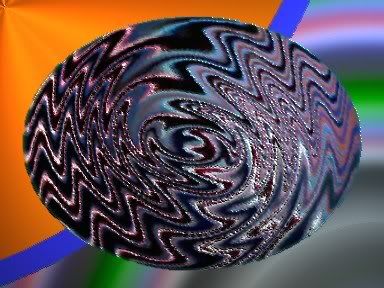 Groove Thing
|

Jun 11 2009
| Muse in the Morning |
–The Dhammapada, 125
Phenomena XIX: comparing
 Groove Thing
|
Jun 10 2009
| Muse in the Morning |
–The Dhammapada, 170
Phenomena XVIII: altering
 Half Twist
|
Jun 09 2009
| Muse in the Morning |
–The Dhammapada, 158
Phenomena XVII: wondering
 Looking Back
|
Jun 08 2009
| Muse in the Morning |
–Sutta Nipata
Phenomena XVI: defending
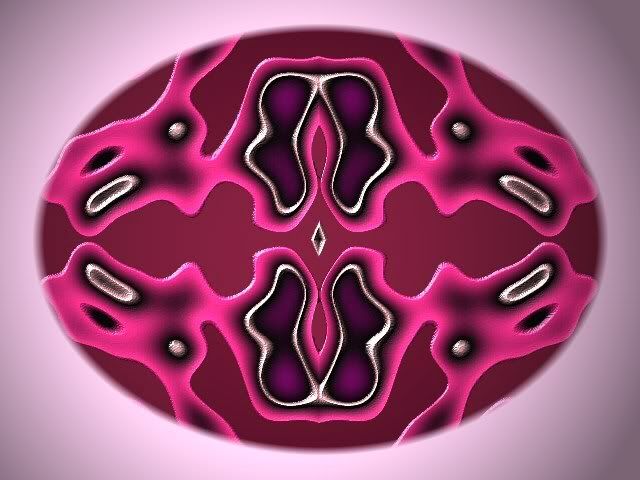 Shades of Gay
|
Jun 07 2009
Spring comes slowly and quietly
to allow Winter to withdraw
slowly and quietly.
The color of the mountain afternoon
is tinged with nostalgia.
The terrible war flower
has left her footprints-
countless petals of separation and death
in white and violet.
Very tenderly, the wound opens itself in the depths of my heart.
Its color is the color of blood,
its nature the nature of separation.
The beauty of Spring blocks my way.
How could I find another path up the mountain?
I suffer so. My soul is frozen.
My heart vibrates like the fragile string of a lute
left out in a stormy night.
Yes, it is really there. Spring has really come.
But the mourning is heard
clearly, unmistakably,
in the wonderful sounds of the birds.
The morning mist is already born.
The breeze of Spring in its song
expresses both my love and my despair.
The cosmos is so indifferent. Why?
To the harbor, I came alone,
and now I leave alone.
There are so many paths leading to the homeland.
They all talk to me in silence. I invoke the Absolute.
Spring has come
to every corner of the ten directions.
Its, alas, is only the song
of departure.
~Thich Nhat Hanh, 1951
Jun 06 2009
It’s June, and time for weddings, graduations — many rights of passage that resurrect the Pachelbel Rant.
A great weekend to all.
Jun 05 2009
| Muse in the Morning |
–The Dhammapada, 1
Phenomena XV: Love
 Transition
|
Jun 05 2009
One’s favorite paintings are purely subjective. Since I first discovered but a poster of it, Paul Cézanne’s Le Lac d’Annecy has been among the handful of mine. The real thing resides in London’s Courtauld Gallery, but I first saw it when the Courtauld Institute was being remodeled, and the collection was shipped exclusively to Toronto. The future Mrs. T and I were headed to a friend’s wedding, in rural Ontario, and had decided to drive across the country. I’d never been to Toronto, so we planned to stay for a few days. We drove in from Indiana, had our car searched at the border, and only made it to our hotel after midnight. Except that there had been a screw-up with the reservation, so it wasn’t our hotel. And it was Gay Pride Week, which meant that almost every room in the city was booked. But the hotel manager managed to reach a friend who ran another hotel, and we ended up in a lavish business suite for the price of a small room. We got to bed around 3 a.m., woke the next day, went out exploring, and saw the banners on lampposts: The Courtauld Collection! In Toronto! Right then! It became our first stop!
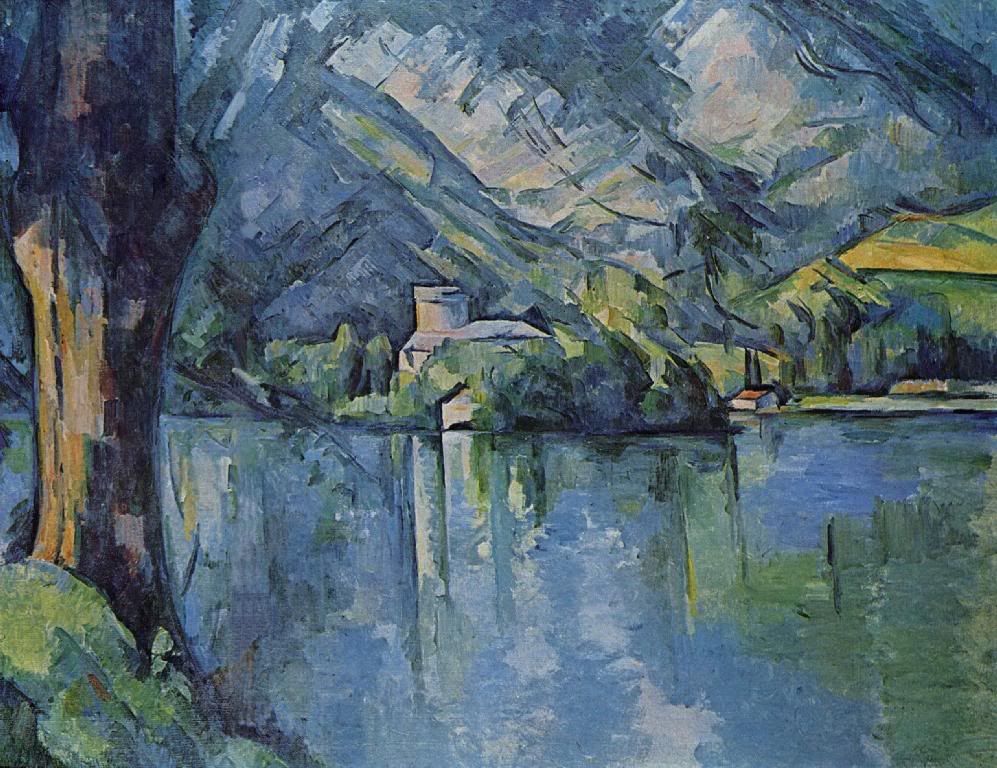
(massive version here)
The haunting magic of the painting simply cannot be captured online. For one thing, Impressionism and Post-Impressionism are very much about physical texture, and unless you can see the brush strokes, you’re not really seeing the painting. And in Cézanne’s case, and specifically with this work, that often meant palette knife strokes, because Cézanne’s fascination with intersecting planes often led him to craft his art with his knife rather than with a paintbrush. And when we found the room with this painting, I could not leave. The future Mrs. T later told me she began to wonder if I would try to walk out with it.
My enchantment led a couple other visitors to inquire about it. I began explaining. A small crowd gathered. I told them to stand ten to fifteen feet back, relax their eyes, and observe the near photo-realism. The perspective is so perfect that you are transported into its depths, from the foreground tree, across the rippled reflections on the water, to the buildings and landscapes across the lake, and on up into the mountains. It’s an astonishing achievement. Because when you then walk closer, to observe the detailed knife and brush strokes and the physical texture, the image dissolves into what is almost Expressionism. Only the best Cubism similarly shimmers between near three-dimensional realism and pure abstraction. Little wonder some art historians say modern art begins with Cézanne.
Jun 04 2009
| Muse in the Morning |
–Bhagavad Gita
Phenomena XIV: crying
 Tears
|
Jun 03 2009
| Muse in the Morning |
–The Dhammapada, 201
Phenomena XIII: hurting
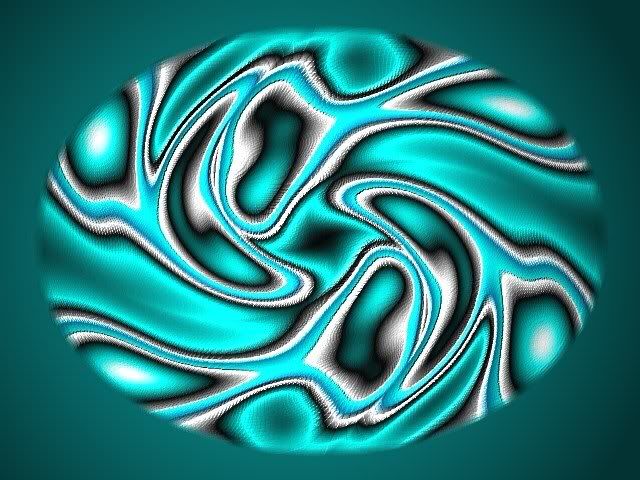 Ice
|
Jun 02 2009
| Muse in the Morning |
–The Dhammapada, 389
Phenomena XII: interacting
 True Colors?
|
Jun 01 2009
| Muse in the Morning |
–Bhagavad Gita
Phenomena XI: uniting
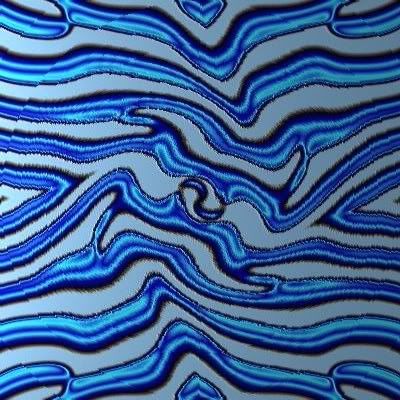 Flow Lines
|